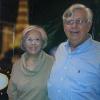Object: A protocol to stimulate an innate cellular mito quality control routine to destroy unhealthy mitochondria, followed by stimulating mitochondrial biogenesis and increasing ATP production.
The experimental protocol:
(1) High dose nicotinamide (one dose, 1-2 grams)
(2) Induction time (1-2 days? Defective mtDNA and mitochondria are recycled)
(3) PQQ (three doses, 10 mg per dose every 6 hours)
(4) Induction time (1-2 days? New mtDNA and mitochondria are created)
(5) C60 (one dose, 3-4 mg)
(6) Time (1-4 weeks? Functioning of all mitochondria is improved)
(7) Repeat
Background: PQQ and C60 are used for higher energy and possibly longer life. The mechanism for C60 is still unknown, but user experiences suggests enhanced ATP production is one feature. PQQ is known to stimulate biogenesis of mitochondria, and thus also more ATP production. But few ask what happens when the cells are full of mitochondria and if the cell is capable of eliminating mitochondria (mitophagy) with any sort of quality control. Until very recently, this was unknown.
Rationale for the protocol:
(1) Certain substances are able to dramatically increase mitophagy, by which cells eliminate poor functioning mitochondria. Cells use the ratio of NAD+ to NADH (the oxidized and reduced forms of nicotinamide adenine dinucleotide) as a signal to begin mitophagy. Precursors to NAD such as nicotinamide (and also niacin and nicotinamide riboside) can increase this ratio and dramatically increase mitophagy—
Reference: Nicotinamide-induced mitophagy: event mediated by high NAD+/NADH ratio and SIRT1 protein activation.
(2) It appears that mitophagy occurs very fast, within one to two days. The unwanted mitochondria are destroyed by lysosomes, and the speed of the process is likely related to the age of the individual. Unfortunately, lysosomes collect indigestible garbage (lipofuscin, for instance, and possibly C60 as well), which slow things down.
Reference: The mitochondrial-lysosomal axis theory of aging
(3-4) PQQ (Pyrroloquinoline quinone) stimulates mitochondrial biogenesis, and this is rather rapid as well. It appears to be proportional to dose and time.
Reference: Pyrroloquinoline Quinone Stimulates Mitochondrial Biogenesis . . . See Fig 1, A & C.
(5-6) If C60 improves all mitochondria (speculative) then that will reduce the ability of the cell machinery to distinguish good from bad mitochondria, as this is likely based on mitochondrial membrane potential. Thus, to be on the safe side, sufficient time should be allowed before the next nicotinamide dose. Certainly they should not be taken at the same time. Some years back I tried a large dose of niacin along with C60, and it took a week before I felt normal again. On the other hand, I don’t see why steps (3-4) and (5-6) couldn’t be combined.






























































